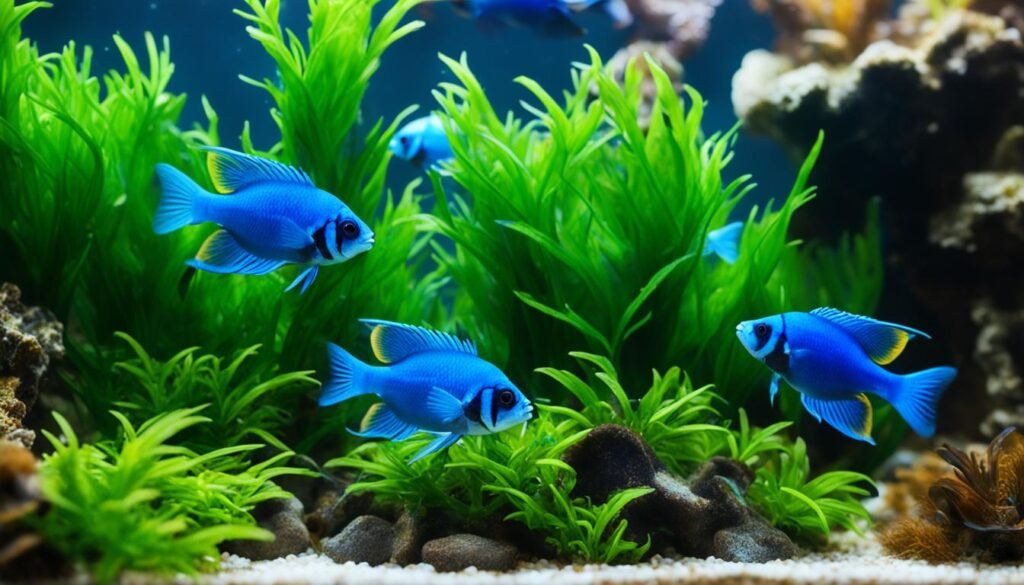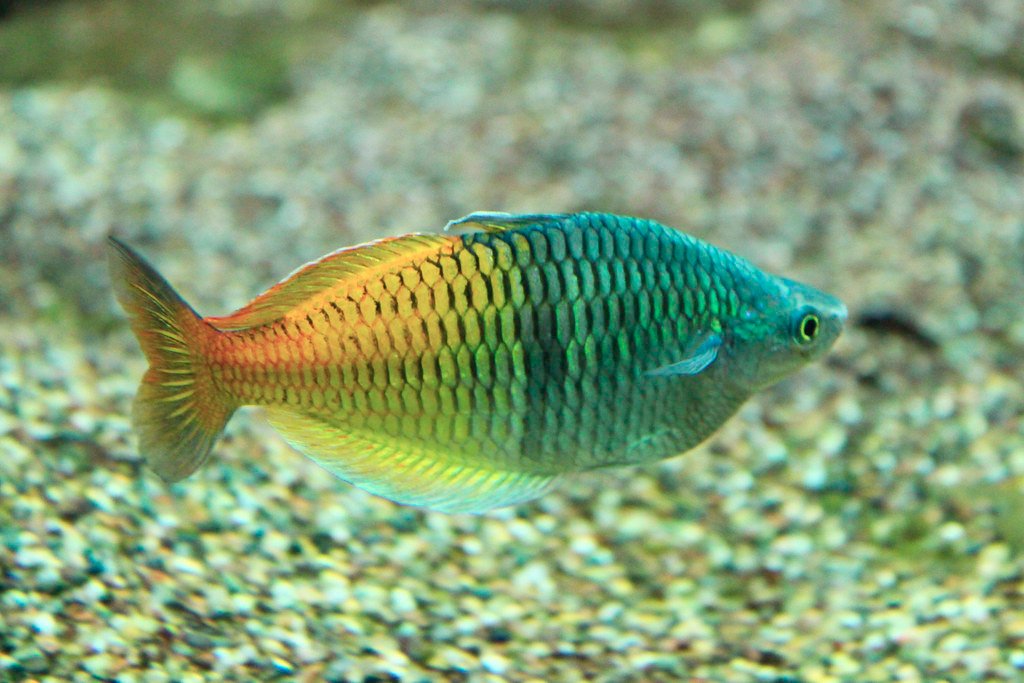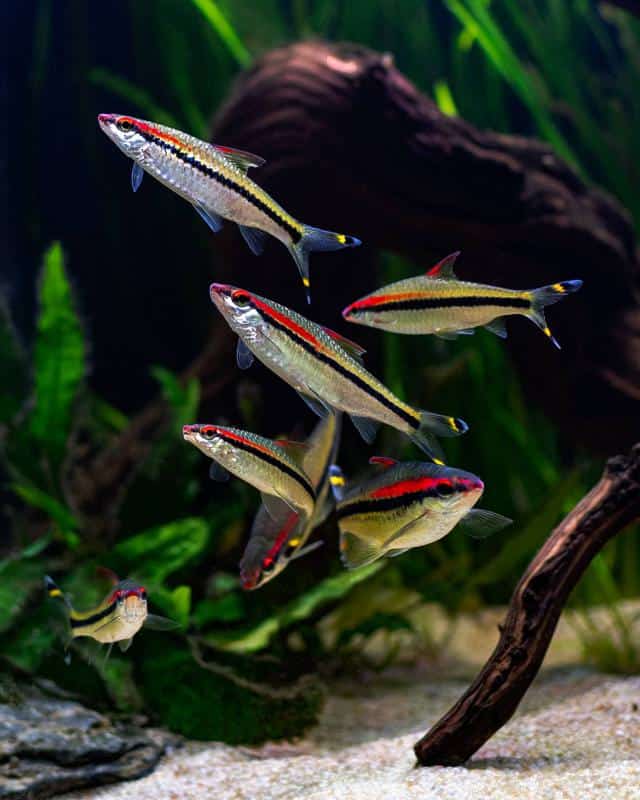Maintaining the perfect water conditions is key when breeding Electric Blue Rams. These fish need a lot of care, especially in small tanks like biocubes. They may not get enough oxygen and their water needs are specific, affecting their breeding. This guide aims to make breeding these rams easier for you, bringing brilliant colors and new fish to your tank.
Table of Contents
Key Takeaways
- Understanding the specific water chemistry needs of electric blue rams is crucial to avoid complications common in small tanks like biocubes.
- Electric Blue Rams thrive in deep tanks with proper oxygenation and varying water requirements.
- Smart tank setup, water conditions, and nutrient-dense diets are pivotal in the electric blue rams breeding process.
- Techniques such as room temperature control and unheated setups contribute to a stable breeding habitat.
- Following a breeding electric blue rams guide can help tackle challenges and increase the likelihood of successful reproduction.
Introduction to Electric Blue Rams
Electric blue rams are a stunning variety of the ram cichlid. They first appeared in 2009 and have amazed aquarium lovers since then. Their bright colors and active nature stand out in any fish tank. Because they’re not as easy to find as other rams, they’re even more special.
What Makes Electric Blue Rams Special?
These cichlids stand out because of their electric blue shade. They’re not just beautiful; they also have interesting habits. They choose a partner for life and have detailed ways of reproducing. This makes them truly intriguing for aquarists. To keep them healthy and vibrant, a tank must have the right kind of filters and fresh water often. They do best in soft, slightly acidic water, with a pH between 5 and 6.
Understanding Their Natural Habitat
These fish come from the Orinoco River basin in Venezuela and Colombia. They like it warm, soft, and a bit acidic. It’s important to recreate these conditions in your tank, with the right tank mates. Electric blue rams eat both meat and vegetables to stay bright and healthy.
Knowing about their home and what they need can help with breeding. Making sure your tank is just right and feeding them well are crucial. This makes your electric blue rams do well and look even more beautiful. Good filters and water changes are a must for their home to be perfect.
Selecting the Right Broodstock
Choosing good broodstock is key to a successful breeding program. You should start by looking for healthy electric blue rams. These fish need to be full of color, have clear eyes, and be very active. Make sure the male Rams you pick can reach up to two and a half inches long. This shows they are strong and healthy. Watch out for signs of disease, like parasites, and treat them early with meds to keep your fish in top condition.
How to Identify Healthy Electric Blue Rams
Healthy electric blue rams are lively and have beautiful colors. They need the right water, which should be soft to medium hard and slightly acidic, with a pH of 5-6. The water should also be warm, between the low eighties and upper eighties F. This creates a good environment for them to thrive. Keep an eye on the water to ensure it stays clean and suitable for breeding. Doing so greatly increases the chances of successful breeding.
Choosing Compatible Pairs
Picking the right pairs is crucial in breeding. Look for pairs that show they’re ready to spawn and separate them to lower stress. This can lead to natural spawning. After spawning, Rams might lay up to five hundred eggs in small groups. Both parents will look after the eggs, with the male often fertilizing them. Opting for wild Rams, maybe from places like Singapore or Czechoslovakia, might boost your success rate. Using dither-fish can also help lessen stress and protect the eggs and fry from harm.
Setting Up the Ideal Breeding Tank
Creating the right environment is key for electric blue rams to breed. You must think about the water and the tank setup. Making the tank feel like their natural home helps them breed a lot and keeps your aquarium healthy.
Optimal Water Conditions
Ideal water for breeding electric blue rams needs high heat, 84-86°F. The water must also be clean, with no nitrates or other bad stuff. You’ll need heaters to keep the temperature steady. Water should be soft with a pH around 5 to match their natural conditions. These conditions help the fish breed and live longer, up to 4 years with good care.
Tank Layout and Decorations
The tank should be a cozy space that makes the fish feel safe. A 20-gallon tank is a good start for a pair of electric blue rams, but bigger is better for more pairs. Use sandy bottoms to feel like the Orinoco River, their home. Add caves, driftwood, and flat stones for fish to hide and lay eggs, crucial for breeding behavior.
Keep the lights soft in the tank to lower stress and help the fish act natural. A sponge filter keeps the water clean without creating strong flows that could upset the breeding process. With the right setup, you’ll help your fish breed successfully and often.
Diet and Conditioning of Breeding Pairs
Getting the diet and condition right for electric blue rams is vital for breeding success. It’s important to give them high-quality food. Also, sticking to a feeding routine helps keep the pairs healthy and fertile.
Importance of High-Quality Food
High-quality food is a must for breeding fish. Foods like brine shrimp and bloodworms, packed with protein, help get electric blue rams ready to breed. Live foods, including mosquito larvae and baby brine shrimp, can really boost the pairs’ condition. Offering a variety of foods improves their health and breeding chances.
Feeding Schedule and Varieties
Establishing a good feeding schedule is key for breeding rams. Older rams usually eat once daily, but younger ones might need feeding twice daily. Their diet should be varied, with dry pellets, bloodworms, and brine shrimp. This mix ensures they get all the nutrients they need. Regular feeding and new food introductions keep them vigorous.
| Food Type | Benefits |
|---|---|
| Brine Shrimp | High in protein and promotes growth |
| Bloodworms | Rich in essential nutrients |
| Mosquito Larvae | Excellent for conditioning breeding pairs |
| Dry Pellets | Convenient and balanced nutrition |
Nutrition is vital for successful breeding with electric blue rams. Mixing food types and sticking to a feeding timetable keeps them in top form. This strategy boosts their chances of reproducing successfully.
Breeding Electric Blue Rams
The process of breeding electric blue rams is truly fascinating. It’s amazing to see how they prepare to spawn in the aquarium. Learning about their unique behaviors and what triggers them to spawn is key to success.
Spawning Behavior and Triggers
Electric blue rams show complex behavior when they’re ready to spawn. For example, they start cleaning a flat surface in the tank. This cleaning marks the start of their spawning process. They also perform a special dance. This helps them get in sync for when they spawn together. Making simple changes like a water change or adjusting the temperature can help start the spawning process. These actions mimic the changing seasons in their natural home, which encourages spawning.
Recognizing Successful Spawning
Seeing when the electric blue rams have successfully spawned takes careful observation. After spawning, the female lays between 150 to 300 eggs, but numbers can vary greatly. The eggs usually hatch in about 40 hours. Then, after five days, the fry are able to swim freely. Watching these steps closely can help you catch and fix any problems early, helping more babies survive.
Getting good results in breeding can be tough. Hatch rates might be from 50% to 99% in different tries. But, changing how you treat the eggs, like using hydrogen peroxide instead of methylene blue, can help hatch more successfully. New breeders should know that these things can change and be ready to adjust their methods.
Understanding how to breed electric blue rams gives aquarists a fulfilling experience. It’s not just about increasing their numbers. It’s also a lesson in how important tiny details are for breeding success.
Caring for Eggs and Fry

After the blue rams spawn, the eggs and fry’s health is the top concern. Good water quality in the tanks is vital. It keeps the eggs safe from fungal infections.
Maintaining Water Quality for Eggs
Eggs need the perfect environment. Blue ram eggs are very sensitive. Keep the water warm at 84-86°F (29-30°C) and soft. This helps the eggs grow well. Do regular water changes and watch out for fungus. These steps keep the water in the tanks healthy.
Feeding and Caring for Fry
When the fry start swimming, give them proper food. Baby brine shrimp is a good choice. It’s full of nutrients. Feed the fry small meals a few times per day.
Don’t feed them too much. This keeps the water clean and the fry healthy. You can also feed them Daphnea, brine shrimp, and mysis. Some also use special fry foods like Golden Pearls. These feeding tips help your electric blue ram fry grow strong and colorful.
Common Challenges in Breeding Electric Blue Rams
Breeding electric blue rams is rewarding but includes special difficulties. Egg health and fish aggression are major challenges.
Preventing Mold and Fungus on Eggs
Mold and fungus on eggs are major issues in this breeding. Female rams lay 150 to 300 eggs per spawn that are 0.9 to 1.5 millimeters long. Keeping water clean is essential to avoid fungus. Aim for a pH of 5 to 6, which matches their soft water needs. Using antifungal medicines can also protect the eggs. It’s wise to let new parents practice. They might not care for the first few batches well.
Handling Aggression in the Breeding Tank
Aggression is also a big issue, usually between breeding pairs or towards the young. To solve this, start with compatible pairs. A 20-gallon tank is good for just a pair. After mating, they might have to be separated. Or, make sure the tank has some space and hiding spots, like rounded stones. This helps them feel more at home and reduces fights.
Using the right strategies for breeding electric blue rams alongside constant monitoring can lead to successful breeding.
Success Stories and Tips from Breeders
In my journey to breed electric blue rams, I learned a lot from other aquarists. Their insights have been like finding a goldmine.
Learning from Experienced Aquarists
In a popular thread, 31 aquarists shared their wisdom on breeding Electric Blue Rams. They emphasized keeping the water at 80 degrees to boost breeding chances. They also stressed the need for top-notch heaters to keep the temperature stable, key for successful breeding.
Many shared their experiences, like buying rams from trusted places like oddballfish.com for $8 each. One member had over 200 eggs produced but faced the challenge of egg-eating. The fish parents protected their eggs aggressively in a 10-gallon tank. Yet, if the eggs were eaten, they would resort to artificial breeding.
Case Studies of Successful Breeding
A study showed three pairs of Blue Rams spawning often in a 125-gallon tank with Neons. Despite ideal water, the fry were at high risk of becoming meals.
Another case had German blue rams in a specially set 10-gallon tank. It had multiple spawning spots and a carefully controlled heater. They ensured the best care by feeding the adults and fry a balanced mix of dry food, frozen items, and live baby brine shrimp.
- Water Parameters: Keeping ammonia and nitrite levels at zero, nitrates low, and pH right is vital.
- Tank Setup: Using a 10-gallon tank with hiding spots encourages the fish’s natural breeding behavior.
- Feeding: A mix of high-quality dry and live foods is essential for the health of breeding pairs and their offspring.
- Temperature Control: The use of good heaters and controllers is a must for keeping the breeding temperature optimal.
The advice and stories from these experienced breeders are invaluable. By following their tips, it’s easier to navigate the challenges of breeding electric blue rams. Applying their strategies increases the chances of success in your aquarium.
Conclusion
Breeding electric blue rams is both challenging and rewarding. It needs close attention to the environment and a clear understanding of their needs. This guide has covered everything from picking the right breeding fish to caring for their babies. Providing the best water, a special tank, and the right food can make your breeding efforts more successful.
Choosing the best breeding fish is key. Healthy, well-matched pairs are more likely to breed successfully. It’s important to keep the water conditions just right to mimic their natural home. This means the water should be warm, soft, and slightly acidic. I’ve shared tips about setting up the perfect tank and what to feed the fish, such as bloodworms and algae pellets.
You must also be ready for problems like aggression and fungal infections on the eggs. Plants and driftwood can help stop fights among the fish. Regular checks and using antifungal medicine when needed can save your eggs and keep your baby fish alive. By following all these steps, you’re ready for a great breeding experience with electric blue rams.
FAQ
What makes electric blue rams special?
How do I simulate the natural habitat of electric blue rams?
What are the signs of a healthy electric blue ram suitable for breeding?
How can I encourage natural spawning behaviors in electric blue rams?
What is the importance of high-quality food in breeding electric blue rams?
What spawning behaviors should I look for in electric blue rams?
How do I maintain water quality for electric blue ram eggs?
What should I feed electric blue ram fry?
How can I prevent mold and fungus on electric blue ram eggs?
How do I handle aggression during the breeding process?
What insights can I gain from experienced aquarists on breeding electric blue rams?
Can electric blue ram lay eggs on gravel?
How to breed electric blue ram cichlid?
References
The South American Cichlid Association (SACA)
The American Cichlid Association (ACA)British Cichlid Association










[…] People love them for their shiny colors and bold nature. They’re also called ram cichlids, blue rams, or butterfly […]
[…] king tetras typically grow up to around two inches in length in a suitable aquarium […]